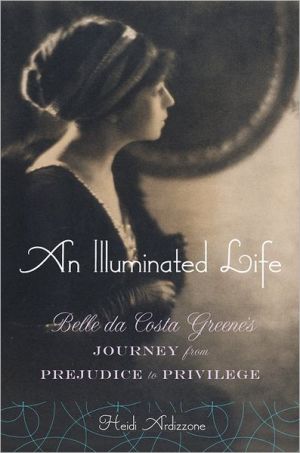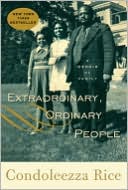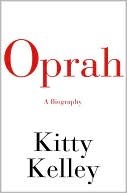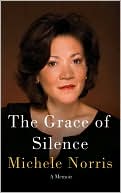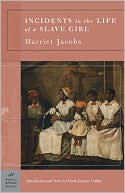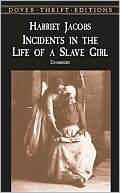An Illuminated Life: Belle da Costa Greene's Journey from Prejudice to Privilege
What would you give up to achieve your dream? When J. P. Morgan hired Belle da Costa Greene in 1905 to organize his rare book and manuscript collection, she had only her personality and a few years of experience to recommend her. Ten years later, she had shaped the famous Pierpont Morgan Library collection and was a proto-celebrity in New York and the art world, renowned for her self-made expertise, her acerbic wit, and her flirtatious relationships. Born to a family of free people of color,...
Search in google:
The secret life of the sensational woman behind the Morgan masterpieces, who lit up New York society.Publishers WeeklyArdizzone's competent, complimentary biography explains the complicated, glamorous woman who transcended her lack of formal higher education and obfuscated her race to become head of the Pierpont Morgan Library and confidante of the financial mogul who founded it. Belle Green (1879-1950), the daughter of a civil rights activist who was the first African-American man to graduate from Harvard College, was plucked by J.P. Morgan's nephew Junius Morgan from the Princeton Library in 1905, where she had developed a passion for the rare pre-15th-century illuminated manuscripts that were to become the basis of her work for Morgan. Greene became a key player in major acquisitions, such as 16 Caxtons from Lord Amherst's collection. She famously lived at full throttle, speaking her mind and taking many lovers, notably married art scholar Bernard Berenson. Morgan's death left her with a sizable inheritance, and she continued at his library. Although Ardizzone delineates the intricacies of major art transactions, she devotes more space to the copious details of Greene's flamboyant personal life than to assessments of the Morgan treasures that were her legacy. Still, Ardizzone (coauthor, Love on Trial) showcases the impressive talents of a woman who once wielded enormous power in New York society. (June)Copyright 2007 Reed Business Information
Introduction: Presenting Belle da Costa Greene 1Raised Expectations 13Gilded Dreams in New York 40Princeton: Early Influences 61Belle Greene, Girl Librarian 78A Turn in the Road 105"The Whirl in Which I Live" 131Bella Italia 174Hiding in the Light 206A Modern Woman 251Crossroads 284Battlefields 326Lady Directress 366A Woman of a Certain Age 421Shining through the Darkness 448Epilogue: The Passing of Belle Greene 471Acknowledgments 481Notes 485Select Bibliography 543Photograph Credits 549Index 551
\ Publishers WeeklyArdizzone's competent, complimentary biography explains the complicated, glamorous woman who transcended her lack of formal higher education and obfuscated her race to become head of the Pierpont Morgan Library and confidante of the financial mogul who founded it. Belle Green (1879-1950), the daughter of a civil rights activist who was the first African-American man to graduate from Harvard College, was plucked by J.P. Morgan's nephew Junius Morgan from the Princeton Library in 1905, where she had developed a passion for the rare pre-15th-century illuminated manuscripts that were to become the basis of her work for Morgan. Greene became a key player in major acquisitions, such as 16 Caxtons from Lord Amherst's collection. She famously lived at full throttle, speaking her mind and taking many lovers, notably married art scholar Bernard Berenson. Morgan's death left her with a sizable inheritance, and she continued at his library. Although Ardizzone delineates the intricacies of major art transactions, she devotes more space to the copious details of Greene's flamboyant personal life than to assessments of the Morgan treasures that were her legacy. Still, Ardizzone (coauthor, Love on Trial) showcases the impressive talents of a woman who once wielded enormous power in New York society. (June)\ Copyright 2007 Reed Business Information\ \ \ \ \ Kirkus ReviewsThorough biography of the intriguing woman who organized financier J.P. Morgan's rare books and illuminated manuscripts. Born in 1879 in Washington, D.C., Greene hailed from a genteel lineage of free African-Americans; in 1870, her father, Richard Greener, was the first black man to graduate from Harvard. Beautiful and dusky-skinned, she had passed since childhood as white (a subject also explored by Ardizzone and co-author Earl Lewis in Love on Trial, 2001). Greene had a scant three years' experience at the Princeton University Library when she was referred to Morgan by his nephew Junius in 1906. She was not intimidated by the gruff ways of her famous employer, who charged her with making his new library preeminent. With Greene's help, he would make spectacular purchases, such as a William Caxton edition of Thomas Malory's Le Morte d'Arthur, and in no time she was enjoying invitations and European travel among the wealthy. In this high milieu, she met and fell in love with art critic Bernard Berenson (advisor to Morgan's rival, collector Isabella Stewart Gardner), with whom she carried on a decades-long affair tacitly approved by his wife, Mary. Though Greene encouraged many other flirtations and affairs over the years, she never married, and she supported her mother and sisters her whole life. She inherited $50,000 when Morgan died in 1913, but continued in her role at the library under son Jack Morgan. He realized Greene's dream of making the collection accessible to everyone by incorporating the library as a public institution in 1923 and naming her director. She retired in 1948 due to ill health, but continued to be a powerful force in the New York art world until her death two yearslater. The prose is workmanlike, but Ardizzone (American Studies/Notre Dame) makes an important contribution by bringing Greene's little-known, culturally significant work to light.\ \
